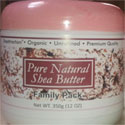Several years ago, Ben Oshionya, a Farm CEO based on the outskirts of Portharcourt-Nigeria, who had purchased my Feed Formulation Handbook and Software got in touch again via phone a week later.
He wanted to know how he could use Indomie noodles waste (from the manufacturer’s factory process), to compound feed for his fish.
Past visits to various farms had already led me to discover a recent trend in which many local pig and fish farmers (in particular) out here, use this low cost by product to boost growth of their animals by incorporating it in the rations they serve them.
Poultry, fish and pig farmers in particular were using it to boost the energy content of their feed, and in some cases for “fattening” purposes.
I also knew from visits to feed mills, that it was readily available for purchase along with other “traditional” feed ingredients.
This made it easy for me to later on that night send him the following text message via my mobile:
——Start of message
“Calculating with information printed on the wrapper of a 70g pack, you find that Indomie noodles has about 71% carbohydrate content(7% being sugar), 9% protein, and 17% fat.
When used in compounded feed, it boosts growth – especially for fingerlings, I am told. Sells for about N50 per kilogram in feed mills.
You can use it to replace some of the maize and other carbohydrate sources in your ration. Watch the fat. tayo.”
——End of message
NB: The above message was sent in 2008. It goes without saying that the prices stated will have changed as of now – 28th May 2015 (7 years on).
In sending him the information, I knew he would follow the Pearson Square Computation method described in my handbook that he’d purchased.
Since Ben already owned a copy of my feed formulation handbook, it was logical to expect that the above would not be difficult for him to do successfully.
Basically, he would incorporate the appropriate quantity of noodles waste into the rations to be fed to the animals (after posting the relevant nutrient composition into the ingredients table provided in the software).
That way he would be able to MEASURE what he used and compare with the performance of the animals, as a guide to deciding on further/future use.
I told him to let me know if he encountered any problems. I did not hear from him, so it’s likely he got on well.
Since then I’ve had similar experiences with other buyers of the handbook and software.
Feed compounding is the art of producing healthy least cost (NOT lowest cost) BALANCED livestock feed/rations using the science of Feed Formulation (e.g. via methods like Pearson Square Computation. Linear Programming and others)
Are you considering trying out alternative feed ingredients for your animal feeds so as to save costs and get better performance from your animals?
An intelligent and cost effective/safe way to proceed would be to use a software, like my Excel-VB driven Ration Formulator, on sale since 2004.
But you need a sound knowledge of the practical feed formulation and compounding, to succeed – whether you use a software or do it manually.
This is why I always recommend that buyers of my software, who lack good understanding of feed formulation and compounding, also purchase my 60-page Practical Livestock Feed Formulation handbook.
It provides step-by-step explanations about how to compound your own cost-effective rations for your farm animals.
Visit my Cost Saving Farm Business Ideas website (click) to learn more about my Feed Formulation Handbook and Software.
Click here to watch 4 videos showing the Ration Formulator in use.
Click here to buy the Feed Formulation Handbook from my online store.
To buy the Feed Formulation Handbook and/or Software, request payment details by using this web form to contact me.









Warning: count(): Parameter must be an array or an object that implements Countable in /home1/tayoswdg/public_html/sdnuggets/wp-includes/class-wp-comment-query.php on line 399